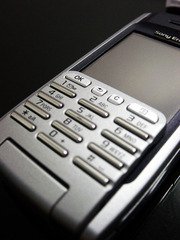 In a closely-watched decision regarding the privacy rights of cell phone users and the power of the police to obtain cell phone tracking information, the United States Supreme Court ruled that the police must obtain a warrant before obtaining the tracking information for the cell phones for most cellphone users.
In a closely-watched decision regarding the privacy rights of cell phone users and the power of the police to obtain cell phone tracking information, the United States Supreme Court ruled that the police must obtain a warrant before obtaining the tracking information for the cell phones for most cellphone users.
Timothy Carpenter was suspected in a series of robberies of RadioShack and T-Mobile stores in several States throughout the country. The FBI had obtained a simple court order allowing them to obtain 27 days of Carpenter’s cell phone location data from Sprint and from MetroPCS. The court order that had been used by the FBI was a simple court order that did not require that the FBI show probable cause for a search warrant. In response to the court order, the FBI was given a 12,898 location point catalog of where Carpenter had been over a period of 27 days. The location data represented an average of 101 data point locations per day. Carpenter was eventually convicted of the robberies and sentenced to over a hundred years in prison. During closing arguments, the prosecutor made a major point of the location data to help bolster his argument that Carpenter had committed the robberies.
On appeal, Carpenter argued that the location data that had been obtained by the FBI should not be admitted in his case because they were obtained without a search warrant. Lower courts disagreed with Carpenter and ruled that the FBI was not required to obtain a search warrant in order to get the location data from the cell phone providers.
 Chicago Criminal Lawyer Blog
Chicago Criminal Lawyer Blog


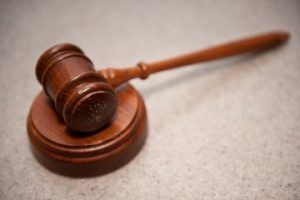 I recently met with a client who had a jury trial for a Domestic Battery charge. After several days of a trial and deliberations, the jury could not agree on a verdict and the judge declared a mistrial. Shortly after the mistrial was declared, the prosecution decided that they would retry the client and he came to my office looking to hire me for the second trial. The client had several questions about what happens at a re-trial and whether Double Jeopardy applied to his case. I answered his questions and realized that people misunderstand what Double Jeopardy means.
I recently met with a client who had a jury trial for a Domestic Battery charge. After several days of a trial and deliberations, the jury could not agree on a verdict and the judge declared a mistrial. Shortly after the mistrial was declared, the prosecution decided that they would retry the client and he came to my office looking to hire me for the second trial. The client had several questions about what happens at a re-trial and whether Double Jeopardy applied to his case. I answered his questions and realized that people misunderstand what Double Jeopardy means.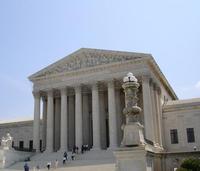 Yesterday, the United States Supreme Court issued several opinions on cases that had been closely watched by observers. The case that has received most of the public attention involves legalized sports betting. But lost in the coverage was the release of two opinions involving the 4th and 5th Amendment rights of criminal defendants. These opinions expand the rights of motorists in their vehicles and the rights of criminal defendants facing prosecution in Criminal Courts. I want to take this opportunity to discuss these two cases and how they will impact the criminal law.
Yesterday, the United States Supreme Court issued several opinions on cases that had been closely watched by observers. The case that has received most of the public attention involves legalized sports betting. But lost in the coverage was the release of two opinions involving the 4th and 5th Amendment rights of criminal defendants. These opinions expand the rights of motorists in their vehicles and the rights of criminal defendants facing prosecution in Criminal Courts. I want to take this opportunity to discuss these two cases and how they will impact the criminal law. Last week I had a meeting with a client in my office in Schaumburg who was being charged with a felony in Rolling Meadows. The client has a lawyer who was representing him for the case. The client came in for a consultation because he was not happy with the services that his current lawyer was providing and was considering hiring me to represent him in the case. The client told me that he had spoken to his lawyer and requested copies of the police reports. His lawyer refused to provide copies of the police report and the client was very upset with that decision.
Last week I had a meeting with a client in my office in Schaumburg who was being charged with a felony in Rolling Meadows. The client has a lawyer who was representing him for the case. The client came in for a consultation because he was not happy with the services that his current lawyer was providing and was considering hiring me to represent him in the case. The client told me that he had spoken to his lawyer and requested copies of the police reports. His lawyer refused to provide copies of the police report and the client was very upset with that decision.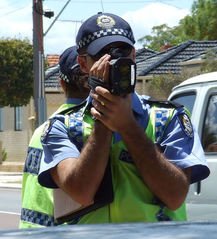 In the past several weeks, I have spoken to several clients who were arrested for Aggravated or Excessive Speeding and were charged with a crime. Most of the people I spoke to did not realize that they could be arrested for speeding. Many people do not understand the Illinois speeding laws and how a simple speeding ticket can lead to you being arrested and facing the real possibility of having a criminal conviction appear on your record and a possible jail sentence in your future. I want to take this opportunity to try to help people understand just how drastic the consequences of a speeding ticket in Illinois can be.
In the past several weeks, I have spoken to several clients who were arrested for Aggravated or Excessive Speeding and were charged with a crime. Most of the people I spoke to did not realize that they could be arrested for speeding. Many people do not understand the Illinois speeding laws and how a simple speeding ticket can lead to you being arrested and facing the real possibility of having a criminal conviction appear on your record and a possible jail sentence in your future. I want to take this opportunity to try to help people understand just how drastic the consequences of a speeding ticket in Illinois can be. It is common to have a client come into my office who is facing criminal charges resulting from a search of their vehicle by a police officer. Many of those clients want to know whether the police had the right to search their vehicle and whether I can have the evidence that was recovered thrown out of Court. There’s no simple answer to this question. Whether the police had the right to search the vehicle and whether I can convince the Court to throw out the evidence depends on the facts of each individual case. I want to talk a little bit about the general rules and what the constitutional limits are when it comes to the police searching a motor vehicle.
It is common to have a client come into my office who is facing criminal charges resulting from a search of their vehicle by a police officer. Many of those clients want to know whether the police had the right to search their vehicle and whether I can have the evidence that was recovered thrown out of Court. There’s no simple answer to this question. Whether the police had the right to search the vehicle and whether I can convince the Court to throw out the evidence depends on the facts of each individual case. I want to talk a little bit about the general rules and what the constitutional limits are when it comes to the police searching a motor vehicle.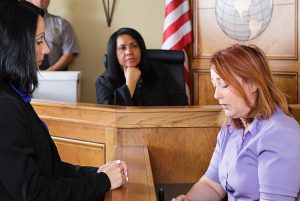 There was a time when eyewitness testimony was considered the best evidence in a criminal case. But recent scientific developments have cast doubt on the reliability of eyewitness testimony. Surveys of jurors in criminal cases show that jurors place great weight on the testimony of eyewitnesses. This can be dangerous because jurors will put greater weight on the testimony of an eyewitness and disregard other powerful and compelling evidence of innocence. Several high-profile cases in which defendants were convicted based on eyewitness testimony were later overturned after it was proven that the defendants were not guilty. Kyle Bloodsworth was convicted of the rape and murder of a nine-year-old girl based on the testimony of five eyewitness. He was later cleared of the rape and murder after DNA testing proved that he was innocent.
There was a time when eyewitness testimony was considered the best evidence in a criminal case. But recent scientific developments have cast doubt on the reliability of eyewitness testimony. Surveys of jurors in criminal cases show that jurors place great weight on the testimony of eyewitnesses. This can be dangerous because jurors will put greater weight on the testimony of an eyewitness and disregard other powerful and compelling evidence of innocence. Several high-profile cases in which defendants were convicted based on eyewitness testimony were later overturned after it was proven that the defendants were not guilty. Kyle Bloodsworth was convicted of the rape and murder of a nine-year-old girl based on the testimony of five eyewitness. He was later cleared of the rape and murder after DNA testing proved that he was innocent. Recently, I have represented clients who received speeding tickets. In the course of representing these clients, I have come to realize that people do not really understand the Illinois Speeding Laws. In the last few years, the Illinois speeding laws have been changed. The changes have drastically increased the penalties for excessive speeding on Illinois roadways. Drivers are not adequately informed of what the potential consequences can be for a speeding ticket.
Recently, I have represented clients who received speeding tickets. In the course of representing these clients, I have come to realize that people do not really understand the Illinois Speeding Laws. In the last few years, the Illinois speeding laws have been changed. The changes have drastically increased the penalties for excessive speeding on Illinois roadways. Drivers are not adequately informed of what the potential consequences can be for a speeding ticket.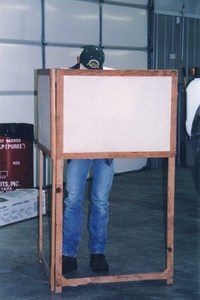 This is a question that I am asked frequently around election time. Most people do not understand what the rules are when it comes to whether you are allowed to vote if you have a felony conviction. Rules vary from state to state and this has created confusion. People don’t understand that each state has it’s own rules which requires that people with felony convictions inform themselves of what the rules are in their state. My experience with this issue is that most people are not informed as to what the law is in Illinois when it comes to felony convictions and voting rights in Illinois. Illinois has passed a specific law which spells out what effect a felony conviction can have on your right to vote in Illinois. The law is set out in 10 ILCS 5/3-5. In Illinois, a convicted felon has just as much of a right to vote as any other citizen in the state. As long as you are not incarcerated, meaning serving a prison sentence, you can register and cast a vote in Illinois. If you are in court and fighting your case, you can vote in Illinois. Even if you are in jail fighting your case. If you are on probation, you can vote in Illinois. If you are on parole, you can vote in Illinois. As long as you have not been convicted and are in prison, you can vote. However, if instead of being in prison, you are allowed to serve your sentence outside of prison, such as prison furlough or work release, you will not be allowed to vote until you finish your sentence. If you went to prison and lost the right to vote you should re-register once you are released from prison so that you can go to the polls and cast your vote.
This is a question that I am asked frequently around election time. Most people do not understand what the rules are when it comes to whether you are allowed to vote if you have a felony conviction. Rules vary from state to state and this has created confusion. People don’t understand that each state has it’s own rules which requires that people with felony convictions inform themselves of what the rules are in their state. My experience with this issue is that most people are not informed as to what the law is in Illinois when it comes to felony convictions and voting rights in Illinois. Illinois has passed a specific law which spells out what effect a felony conviction can have on your right to vote in Illinois. The law is set out in 10 ILCS 5/3-5. In Illinois, a convicted felon has just as much of a right to vote as any other citizen in the state. As long as you are not incarcerated, meaning serving a prison sentence, you can register and cast a vote in Illinois. If you are in court and fighting your case, you can vote in Illinois. Even if you are in jail fighting your case. If you are on probation, you can vote in Illinois. If you are on parole, you can vote in Illinois. As long as you have not been convicted and are in prison, you can vote. However, if instead of being in prison, you are allowed to serve your sentence outside of prison, such as prison furlough or work release, you will not be allowed to vote until you finish your sentence. If you went to prison and lost the right to vote you should re-register once you are released from prison so that you can go to the polls and cast your vote.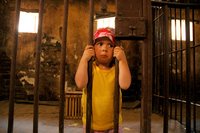 What determines how serious a particular criminal charge in Illinois is depends on the potential criminal penalty that the crime carries. The lowest classification of crimes in Illinois is called a Misdemeanor. The highest classification of crimes in Illinois is called a Felony. Generally, any jail sentence for a Misdemeanor must be served in County Jail. Any jail sentence for a Felony must be served in State Prison. Any potential jail sentence for a Misdemeanor is under one year while any potential jail sentence for a Felony is one year or more. The range of penalties for Misdemeanors and Felonies in Illinois depend on what Class the crime you are charged with falls in. Every criminal offense is classified as a Felony or a Misdemeanor and assigned a specific Class. An experienced and knowledgeable criminal defense lawyer will know whether you are being charged with a Felony or a Misdemeanor and what class your criminal charge falls in.
What determines how serious a particular criminal charge in Illinois is depends on the potential criminal penalty that the crime carries. The lowest classification of crimes in Illinois is called a Misdemeanor. The highest classification of crimes in Illinois is called a Felony. Generally, any jail sentence for a Misdemeanor must be served in County Jail. Any jail sentence for a Felony must be served in State Prison. Any potential jail sentence for a Misdemeanor is under one year while any potential jail sentence for a Felony is one year or more. The range of penalties for Misdemeanors and Felonies in Illinois depend on what Class the crime you are charged with falls in. Every criminal offense is classified as a Felony or a Misdemeanor and assigned a specific Class. An experienced and knowledgeable criminal defense lawyer will know whether you are being charged with a Felony or a Misdemeanor and what class your criminal charge falls in.